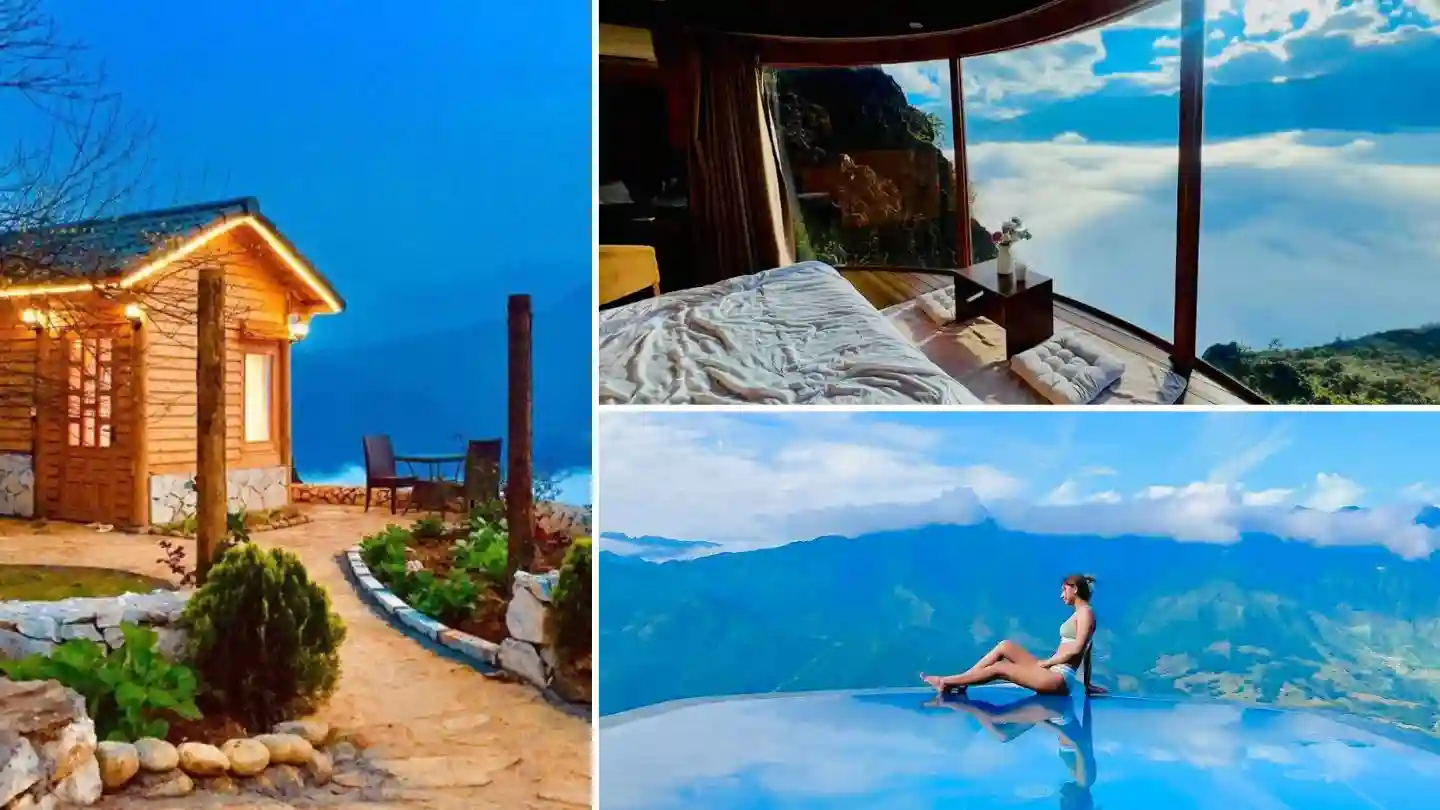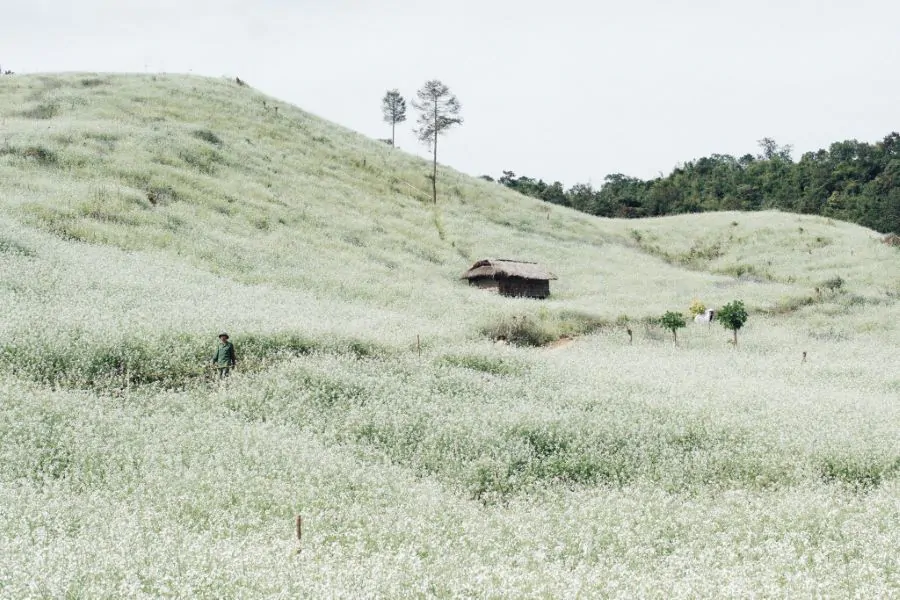Contents
Sapa Church – An Ancient Symbol of the Sapa Misty Town
Sapa Church, known as the Church of Our Lady of the Rosary, is a captivating landmark situated in the center of Sapa town, Lao Cai Province, Vietnam. Constructed in the 20th century by French colonizers, this ancient stone church, with its iconic belltower, is a significant site for both sightseeing and cultural activities in Sapa. It serves as a focal point for the traditional cultural practices of the local ethnic minority groups.
Discover the allure of this historical stone church and understand why it continues to attract tourists to Sapa, eager to admire its unique architecture and rich history.
Location: Center of Sapa town, Lao Cai Province, Vietnam
Opening hours: 6:00 am to 8:30 pm
Entrance fee: Free
Visiting duration: Approximately 1.5 hours
Best time to visit: Between 8:00 am and 10:00 am
Best months to visit: April, May, June, September, October
I. History of Sapa Church
Built in 1902 by the French, the Sapa Church occupies a prime geographical location, with the majestic Ham Rong Mountain Range as its backdrop and a broad, flat area in front. Standing firm for over a century, this church has witnessed numerous significant events in Vietnam’s history.
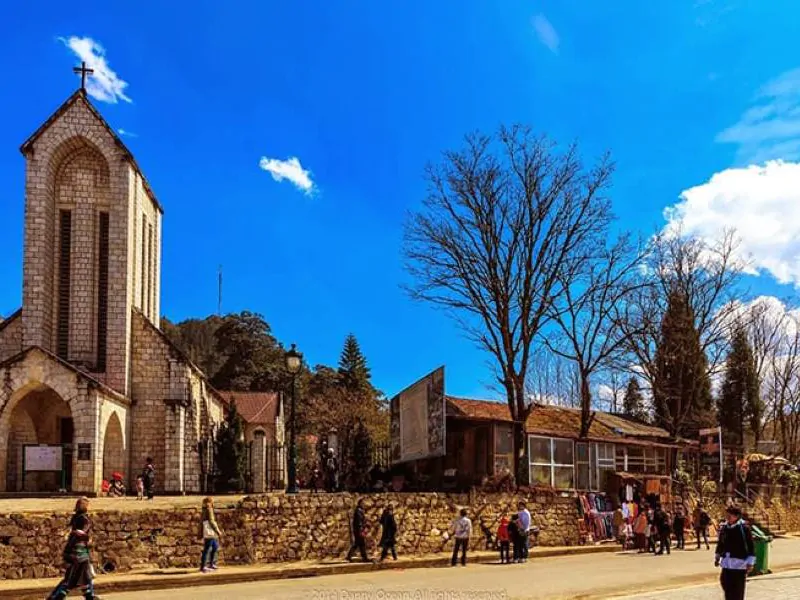
Historical Significance:
According to historical records, construction of the church began in 1902, and it was completed in 1935, officially coming into use. During World War II, the church was closed due to the Japanese occupation and remained unused during the conflict. Subsequently, it was repurposed for storing rice and agricultural products. In 1995, local authorities initiated restoration efforts, allowing the parish to resume religious practices.
Despite natural wear and tear, the Sapa Stone Church has undergone more than five restoration phases. These efforts have preserved the church’s original beauty, maintaining its historical and architectural integrity.
II. Highlights of Sapa Church
1. Architectural Marvel
The Sapa Church is constructed from stones bound together by a mixture of sand, molasses, and lime. Reflecting French architectural influence, it is the only remaining structure in Sapa that retains the essence of Catholic architecture.

Key Features:
- Bell Tower: The elegant, cross-shaped bell tower faces west, symbolizing Christ’s birthplace.
- Materials: The walls, made of sandstone, glisten like stalactites, adding a natural charm.
- Ceiling: The ceiling, a mix of iron, straw, and lime, retains its original aesthetic.
- Stained Glass Windows: The 32 colorful stained glass windows depict scenes from Jesus’s life and shine brilliantly in the sunlight.
2. Structural Layout
Covering a total area of 6000m², the church complex includes multiple sections such as the church area, angel house, parish house, and holy garden.
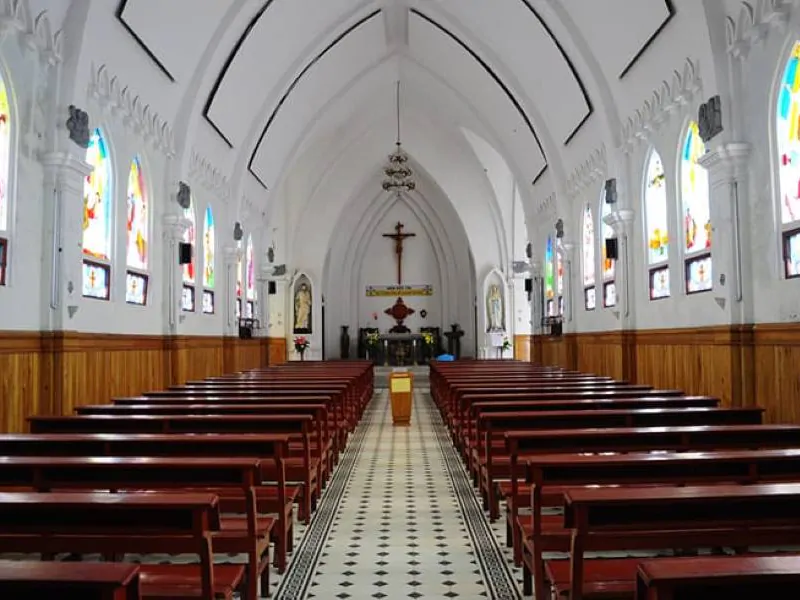
Significant Structures:
- Church Area: Spanning over 500m², it features a 20m-high bell tower housing an 80-year-old, 500kg bell.
- Parish House: This five-section building matches the church area in size.
- Angel House: Comprising three floors and a basement.
- Holy Garden: Home to five ancient trees, four of which grow on rocks, attracting numerous visitors.
3. Unique Beauty of Sapa Church
Situated in the misty town of Sapa, the Stone Church serves as a hub for traditional activities. Every Saturday, tourists can witness unique cultural events, such as the ‘Love Market,’ alongside spiritual activities of the ethnic communities. The surrounding quaint buildings add an ancient charm, making the church’s landscape appear like a “castle in the sunset.”
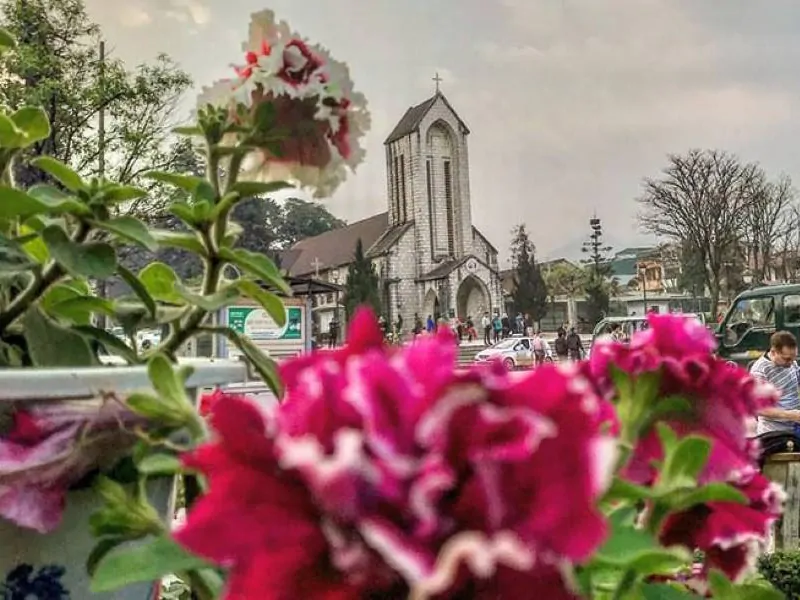
III. What to See and Do at Sapa Church
1. Sightseeing
As a symbol of religion and architecture, the Sapa Stone Church is an unmistakable landmark. Visitors are often captivated by its striking white stone construction and Roman Gothic architecture. The church provides a picturesque backdrop for photography and is a must-visit for sightseeing enthusiasts.
2. Visiting the Love Market at Night
Every Saturday evening, the courtyard in front of the church comes alive with the ‘Love Market.’ Ethnic people gather to engage in cultural games, singing, and dancing, creating a romantic and festive atmosphere. Visitors can participate in unique cultural practices such as wife kidnapping, H’Mong Khen dancing, and love songs in minority languages, offering an unforgettable experience.
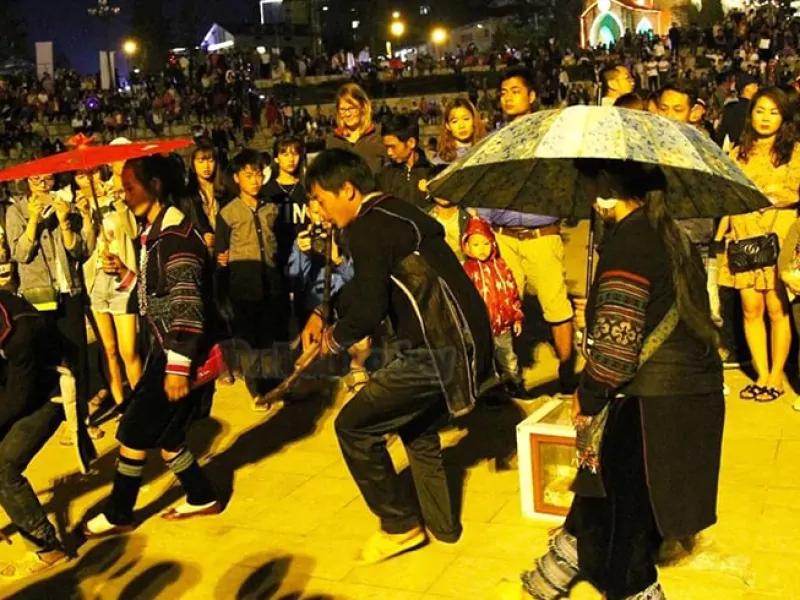
3. Participating in Traditional Games
The church’s courtyard is also a venue for traditional games. Tourists can enjoy activities like cane wrestling, Pao throwing, Con ball throwing, pushing cane, Tulu, archery, and tug-of-war. Engaging in these activities provides an exciting glimpse into the local culture.

IV. How to Get to Sapa Church
Travelers can reach the Sapa Stone Church from Hanoi in several ways:
By Train:
Take a train from Hanoi station to Lao Cai province, a journey of about 8 hours. It’s advisable to board an evening train, arriving in Lao Cai early in the morning. From there, a bus or taxi can take you to Sapa.
By Sleeper Bus:
Sleeper buses leave Hanoi at 7 am or 9 pm, reaching Sapa in about 6 hours without the need for transfers.
By Motorbike or Private Car:
For those seeking adventure, traveling by motorbike or private car is a viable option, offering flexibility and scenic views along the way.
V. Tips for Visiting Sapa Church
- Accommodation: Book hotels in advance, especially during peak season, as affordable options fill up quickly.
- Photography: Always ask for permission before photographing local ethnic people.
- Local Interaction: Avoid giving money or candy to local children.
- Timing: Visit between April and October for the best experience, and avoid weekends to steer clear of crowds.
Sapa Church stands as a precious jewel in Sapa, a testament to the town’s rich history and cultural heritage. Its serene and timeless beauty, combined with the mystique of the surrounding landscape, makes it a must-visit destination. Pack your bags, book a tour, and embark on an unforgettable adventure to this enchanting place. Share your experiences with us, and feel free to contribute any insights on this topic.







